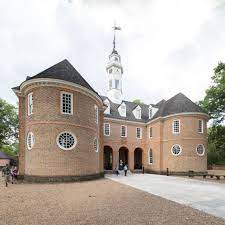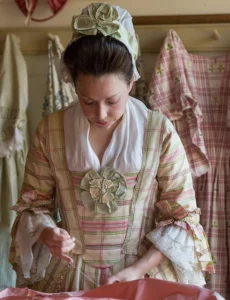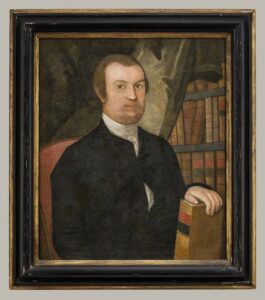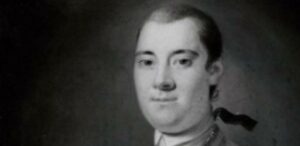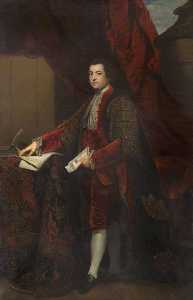Americanism Redux
July 6, your today, on the journey to the American Founding, 250 years ago, in 1773
Here they come. Just stand over here with me. Pay attention and keep your eyes and ears open.
****************************************
Throughout the day, they come. One person, a pair, a small group. They say much the same things.
–He looks so natural.
–It’s simply amazing, like he’s ready to talk again in that sweet voice.
–I miss him.
–We need him now more than ever.
–(without words, a sigh, a thoughtful stare, the mind turning over and over again with wisps of regret and sadness)
They walk slowly away. Is it a funeral viewing of a corpse? Almost.
(the Botetourt Statue, current location, Swem Library, College of William & Mary)
***********************************
Miracles come in all sizes, including 2000 pounds.
Two years in the making, the painstaking work of sculptor and artist Englishman Richard Hayward, the one-ton statue went from marble block to breath-taking form with hammer and flat chisel, hammer and tooth chisel, and in those critical last stages of artistic creation, a rasp and cloth. The statue is of Lord Botetourt, first known as Norborne Berkeley, royal governor of Virginia, 1768-1770, popular and revered leader, and all-around good guy, respected by everyone, mourned by everyone. It arrived the other day and today, 250 years ago, it’s on display in front of the capital building at Williamsburg. George Washington sees it, Thomas Jefferson sees it, Patrick Henry sees it, James Madison sees it, the whole crew and then some.
People walk by and their reaction is unanimous. The statue seems to be alive. But really, that’s in their minds, because they’re remembering him from before. The statue sparks the memory. Three years ago he died and the Virginia Assembly immediately voted for money to pay for a statue, quite a statement in its own right. They hired a guy to find a guy who could do it. They wanted him remembered, and what a crucial time it is now that this marble man is newly in their midst.
Can we find that way again? Does the stone speak the spirit, and can we turn the sound to action?
Maybe, 250 years ago today, someone will answer the question.
(original location of the Botetourt Statue outside the Capitol building, Williamsburg)
Also
–It still hurts, a little.
That’s the debt paid off by Catherine Rathell several days ago. It was big, leaving a sting these days later as she thinks back on it today, 250 years ago. She handed over a large payment—ouch—owed to a merchant who had sold her a variety of goods for resale in her store in Williamsburg, Virginia. Rathell is a milliner by trade, a maker and seller of women’s hats. But that’s a fraction of the truth.
The fuller story is that she is a business woman of impressive experience and skill. A shop or store? Far from it—she operates more of a lifestyle practice. She’s been in the colony of Virginia for the past seven years, and has relocated her enterprise from Fredericksburg to Annapolis to Williamsburg, keeping pace with a defined market of upscale clients and aspirational upscale clients. Rathell advertises the latest of everything and the best of everything when it comes to fashion, popular personal items, and luxury accessories. She takes only cash, no credit, and if a shipment of anything arrives at her store that doesn’t meet her standards, she’ll return it to the shipper and demand return of her money, along with a series of nasty letters to anyone associated with the shoddy goods. Feared and respected, Catherine Rathell knows every inch of the Chesapeake Bay and Tidewater markets for the latest apparel and style goods from England. 250 years ago today, when the winds shift, you’ll see her head tilt upward for the scent of storms.
(modern re-enactor of Catherina Rathell)
–Yes, I’ll take the position.
On the distant eastern edge of that wind, in London, England, John Norton, who knows Rathell by both fact and reputation, has decided to accept an offer from the group of Virginia assembly members who formed the Virginia Committee of Correspondence several weeks ago. They asked him to be their agent—a combination of lobbyist, advisor, and intelligence-gatherer—in London. They know Norton has worked hard on behalf of his colony-community over the years, including his role in finding Richard Hayward to make the Botetourt statue.
In a letter written today 250 years ago, Norton answers their latest request of him. He announces his acceptance of the agent position and, almost as proof of his value in the new role, also offers his first reports of insider-political news and recommendations. Norton says his contacts with the British East India Company are telling him the new tea law enacted a few weeks ago may have a dual purpose—one, shipping EIC tea to the colonies and, two, serving as “a cat’s paw” that “forces” colonists to pay an extra duty for the EIC’s product. Passing on recommendations from his EIC contacts, Norton urges the Virginia assemblymen not to allow sale of the tea until the extra duty is removed, though he admits “that what their resolution will be, time only will discover.” Who knows—maybe someday they’ll make a Norton statue for the work he’ll be doing at this critical time. Right alongside Botetourt.
(John Norton’s son, John Hatley Norton–note the scene’s imagery)
–They’re telling lies about me.
One royal governor writing another royal governor, 250 years ago today, Thomas Hutchinson of Massachusetts colony pours his frustrations onto the page that William Tryon of New York colony will read a few days from now. Hutchinson describes the nasty events surrounding the seizure and public release of private letters he’d written five years earlier, before he was even officially governor of the colony. He’d expressed negative feelings toward people who criticized and opposed British imperial policy. He’d also expressed his strong commitment to the British imperial model, now and forever.
Hutchinson tells Tryon of an interesting insight—that few people have actually read the released letters but nearly everyone has read the accusatory and vicious reports ABOUT the letters. Further, Hutchinson concludes, “I pity the poor people who suffer themselves to be duped by a few men who seem to drive things to the utmost extremity against all connection with the Kingdom & never to be easy till they have a governor who will join with them.”
(New York Royal Governor William Tryon, recipient of Hutchinson’s letter)
–They’ll kill him unless you protect him.
Three British imperial officials in Boston—William Burch, Henry Hulton, and Charles Saxton—agree today 250 years ago that one of their inspectors, Robert Moreton, will likely be harassed, injured, and potentially killed by colonists who resent his authority to enforce British imperial trade laws. Moreton’s authority, of course, includes finding and punishing ship owners and operators who violate the rules, regulations, and procedures of trade.
It had come close to happening two months ago in Baltimore. A man suspected of informing on violators was beaten and tortured, while another man assisting with inspection escaped a furious group of pursuers by hiding in the woods. The trio of Burch, Hulton, and Saxton are afraid it will only get worse with Moreton’s assignment in Annapolis, Maryland colony. A mob, they fear, is waiting for him. The trio is writing today from Boston to ask Maryland Governor Robert Eden for his assistance with, from their view, future protestors likely gone violent and vigilante.
(Charles Townshend, originator of the job of Customs Commissioner in 1767)
For You Now
This is the life shared in my series, one week at a time.
It’s the visible and the invisible. Which holds and which works? And which is fading and which is growing?
The statue is visible with invisible forces attached as memories, nostalgia, hopefulness. They are the invisible outcomes of visible art. The formal offices of royal governor and customs official have visible authority with assumed power, but the invisibility of the thing poses problems and suggests weaknesses. An elected legislative office is visible, though an invisibility exists here too—as in the member choosing to do this or that with the seat itself; the Committee of Correspondence is comprised of some legislators going a way different from the governor’s. The position of agent includes salary and tasks—surely the stuff of the visible—while a great deal of invisibility comes with implications, unknowns, and guesswork. And, finally, a business master lives on the passions, perceptions, emotions, and impulses of customers and their lifestyles. It is an art of itself crafted from invisible stone, objective of nothing and subjective to everything.
Out of the visibles and invisibles a River takes shape and the currents find form. That is true for your individual life. That is equally true for your individual live blending together with the lives of others. That is further true for the lives of a people, of whom you may see, and judge, your individual expression.
Stand by the stones and listen for the River.
(listening)
Suggestion
Take a few minutes and consider this—in thinking about our national condition as of today, 250 seconds ago, what’s the first visible and invisible that comes to mind? And does this pair of immediate choices suggest something about your state of mind?
(the nation and your state of mind)

